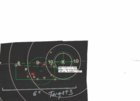Murray Brook
Silver $$ Contributor
@JimSC
As I mentioned in my post I don't have all the answers, but if you have a primer pocket with a depth of .131 and your primer is .127 then with a .004 crush I believe they should be .008 below flush. And as mentioned this could change from case to case and more so from one brand of case to another. As you mentioned I am wondering how the K&M tool compensate for different measurements or must you select primers of a constant measure and primer pockets of an exact depth.
As I mentioned in my post I don't have all the answers, but if you have a primer pocket with a depth of .131 and your primer is .127 then with a .004 crush I believe they should be .008 below flush. And as mentioned this could change from case to case and more so from one brand of case to another. As you mentioned I am wondering how the K&M tool compensate for different measurements or must you select primers of a constant measure and primer pockets of an exact depth.











